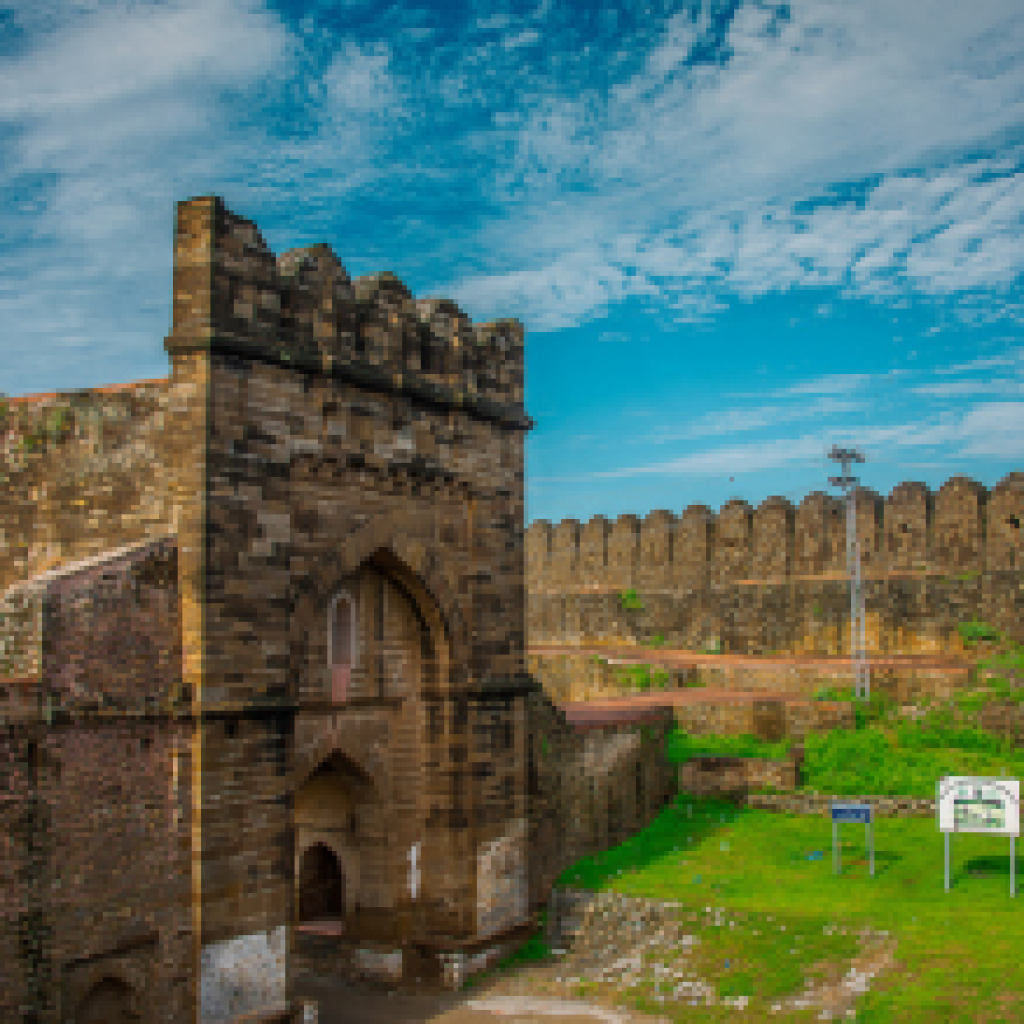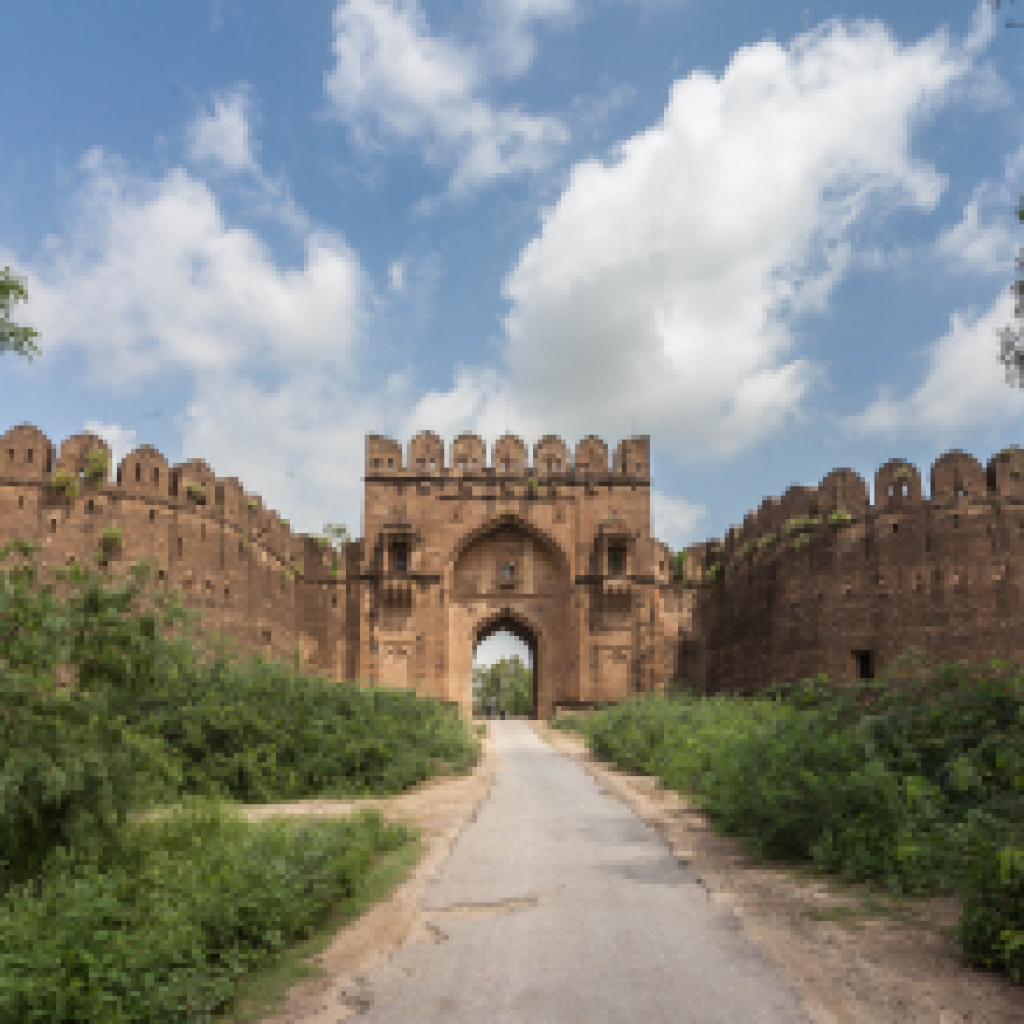Tour Objective:
Explore the rich history and architectural brilliance of Rohtas Fort, a 16th-century military stronghold in Punjab, Pakistan. Discover its unique features, cultural significance, and the ongoing efforts to preserve this exceptional UNESCO World Heritage site.



Introduction:
114 Km from Islamabad and 217 Km from Lahore on GT Road is the historical Rohtas Fort , in the Jehlum District of Pakistan also known as Qila Rohtas, as a testament to the early Muslim military architecture that flourished in central and south Asia during the 16th century. This UNESCO World Heritage site, spanning 70 hectares, was initiated in 1541 by Sher Shah Suri, the founder of the Suri dynasty, marking a shift in fortification design in response to the advent of gunpowder and cannon.
Table of Contents
Rohtas Fort Design:
Irregular in the plan, Rohtas Fort gracefully follows the natural contours of its hilltop site. The massive masonry walls, over four kilometers in circumference, are adorned with 68 bastions and 12 monumental gateways strategically placed and constructed with precision in ashlar stone. Following were the gates:-
| Sohail Gate | Shah Chandwali Gate | Kabuli Gate | Shishi Gate |
| Langar Khani Gate | Talaqi Gate | Kashmiri Gate | Khwas Khani Gate |
| Tulla Mori Gate | Pipalwala Gate | Sar Gate | Mori Gate |
A distinguishing feature of Rohtas Fort is its interior wall that divides the inner citadel from the rest of the fort. The incorporation of baolis, or stepped wells, ensured a self-sufficient water supply for the garrison. The Shahi Masjid, a beautiful mosque near the Kabuli Gate, and the Haveli Man Singh, constructed during the Mughal period, add to the architectural richness of the site.
Rohtas Fort’s significance:
Rohtas Fort’s significance extends beyond its imposing structure; it served as a model for Mughal architecture, influencing subsequent refinements and adaptations. The blend of artistic traditions from Turkey and the Indian subcontinent is evident in the high- and low-relief carvings, calligraphic inscriptions, plaster decorations, and glazed tiles that adorn the fort.
The fort remained in continuous use until 1707, witnessing occupation by Durrani and Sikh rulers in the 18th and 19th centuries. Today, a village thrives within its walls, making Rohtas Fort a unique and well-preserved example of 16th-century military architecture in the subcontinent.
UNESCO Criteria:
- Criterion (ii): Rohtas Fort’s blend of architectural traditions from Turkey and the Indian subcontinent shaped the model for Mughal architecture and its subsequent adaptations.
- Criterion (iv): It stands as an exceptional example of 16th-century Muslim military architecture in central and south Asia.
Protection and Management:
Protected under the Antiquities Act, 1975, and administered by the Directorate General of Archaeology and Museums, the fort enjoys strict control over any alterations in and around the village within its walls. The Rohtas Fort Conservation Programme, initiated in 2000, aims to uphold international standards of conservation and tourism.
Recent Condition and Preservation:
Despite sections in fair preservation, recent challenges such as seepage and neglect have caused certain portions, like the Haveli Man Singh and Talaqi Gate, to deteriorate. Ongoing efforts focus on implementing the master conservation plan to sustain the fort’s Outstanding Universal Value.
Conclusion:
Rohtas Fort, with its exceptional blend of architectural styles and historical significance, stands as a remarkable testament to the ingenuity of Muslim military architecture in the 16th century. From its strategic construction under Sher Shah Suri to its enduring influence on Mughal architecture, the fort continues to be a source of pride for Pakistan. Efforts to preserve its authenticity and protect its integrity underscore the commitment to maintaining this UNESCO World Heritage site for future generations. Explore the rich history, intricate designs, and ongoing conservation efforts at Rohtas Fort, a jewel in the crown of Pakistan’s cultural heritage.


0 Comment